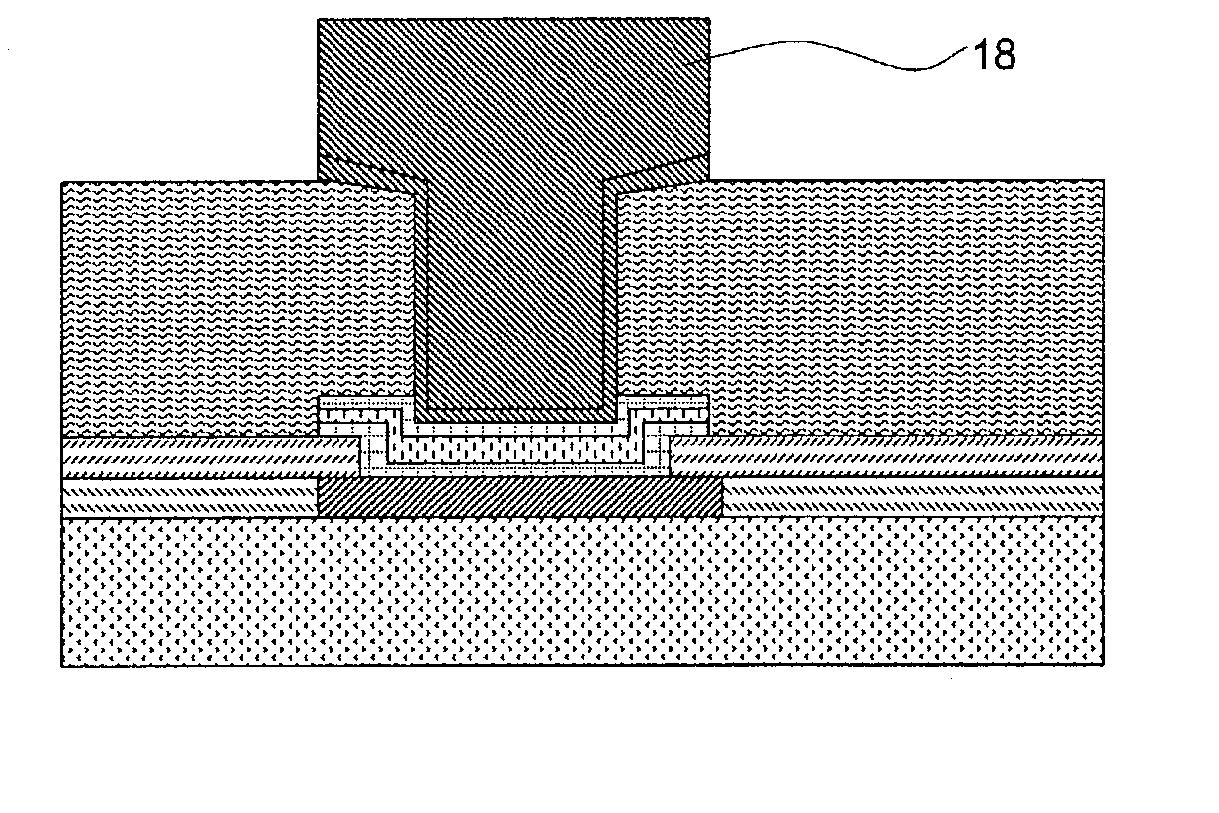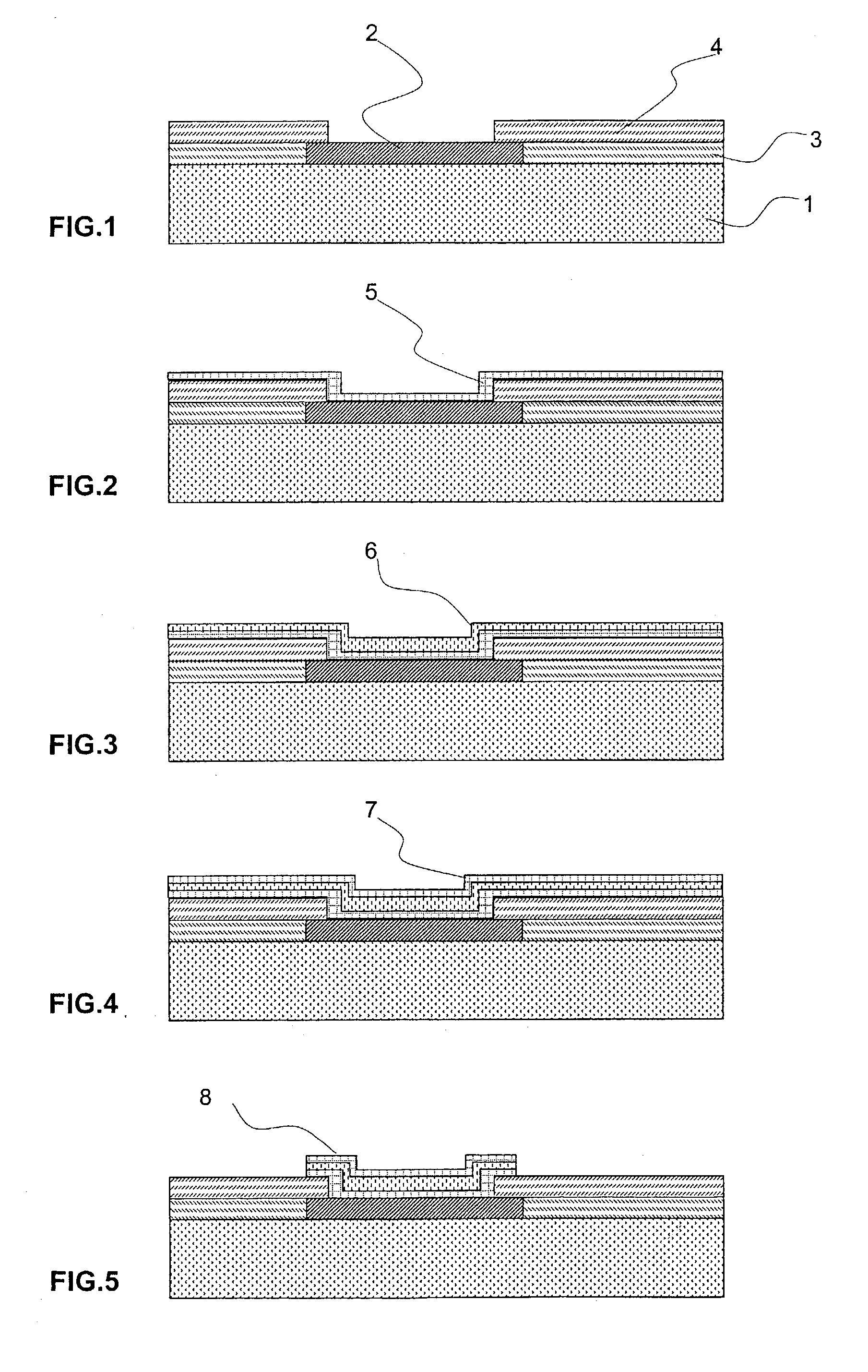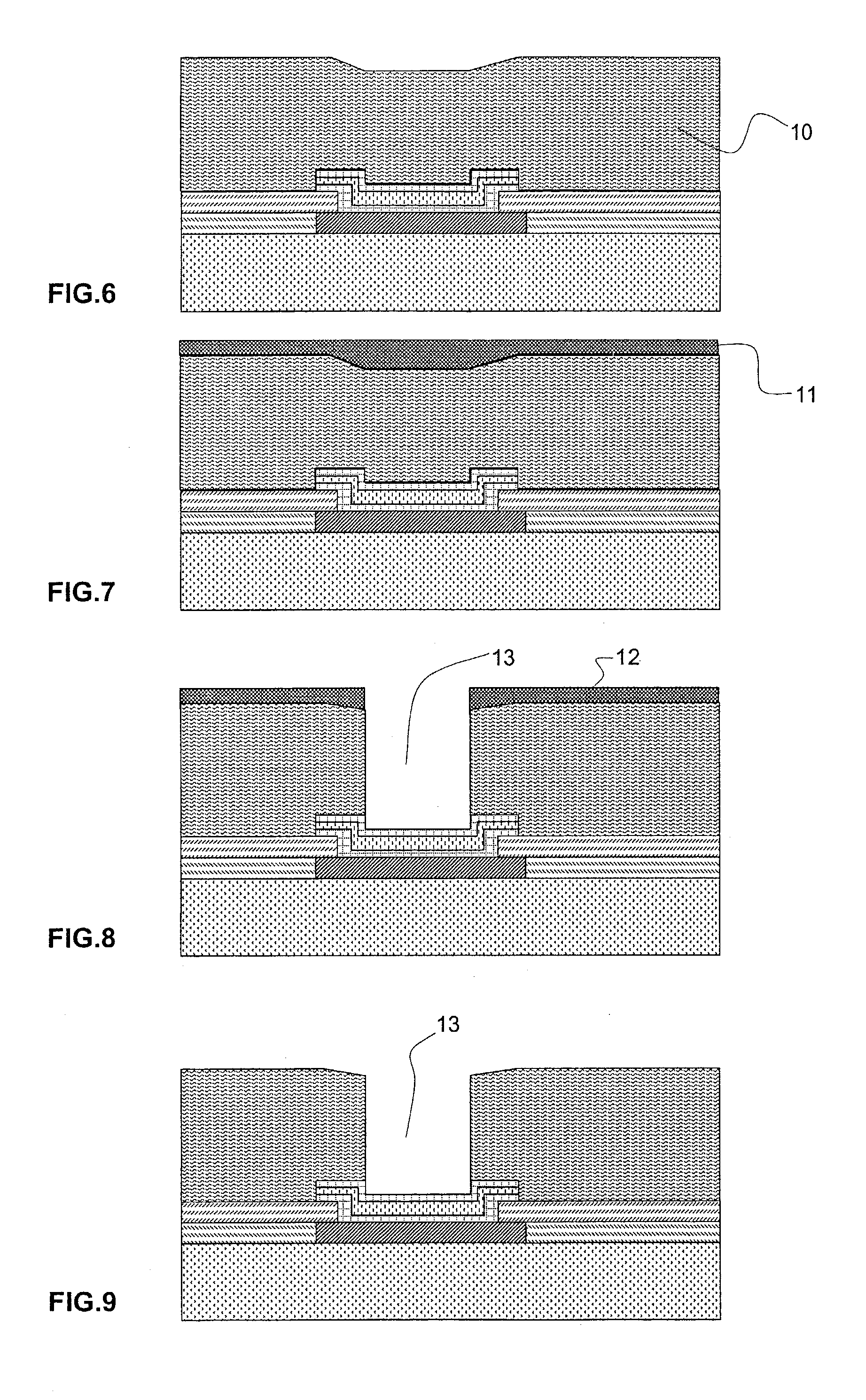Electronic component incorporating an integrated circuit and planar microcapacitor
- Summary
- Abstract
- Description
- Claims
- Application Information
AI Technical Summary
Benefits of technology
Problems solved by technology
Method used
Image
Examples
Embodiment Construction
[0031] As already stated, the invention relates to a microcapacitor made on an electronic component incorporating an integrated circuit.
[0032] This capacitor may be made, as in the illustrated figures, in the upper plane of the substrate. Nevertheless, in other forms of embodiment (not illustrated), this microcapacitor may be made within the substrate itself, in the lower metallization plane of the integrated circuit.
[0033] Thus, as illustrated in FIG. 1, the substrate (1) may comprise a connection pad (2) made from a material such as aluminum or copper, or even an aluminum-silicon, aluminum-copper or copper-zinc alloy. In the form illustrated, the substrate (1) is coated with a first passivation layer (3), typically made of SiO.sub.2. This silica layer (3) is coated with a layer of silicon nitride Si.sub.3N.sub.4 making it possible to protect the lower silica layer against exposure to air.
[0034] Before proceeding to deposit the various characteristic layers, non-corrosive cleaning ...
PUM
| Property | Measurement | Unit |
|---|---|---|
| Nanoscale particle size | aaaaa | aaaaa |
Abstract
Description
Claims
Application Information
 Login to View More
Login to View More - R&D
- Intellectual Property
- Life Sciences
- Materials
- Tech Scout
- Unparalleled Data Quality
- Higher Quality Content
- 60% Fewer Hallucinations
Browse by: Latest US Patents, China's latest patents, Technical Efficacy Thesaurus, Application Domain, Technology Topic, Popular Technical Reports.
© 2025 PatSnap. All rights reserved.Legal|Privacy policy|Modern Slavery Act Transparency Statement|Sitemap|About US| Contact US: help@patsnap.com



